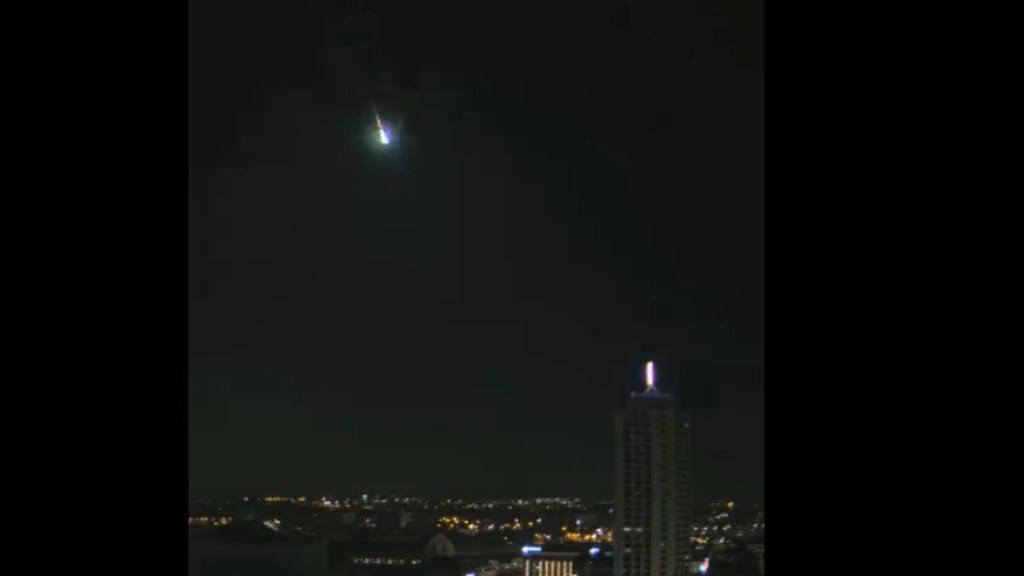Early on a Sunday morning, a small asteroid dazzled the skies over eastern Germany as it entered Earth’s atmosphere, later revealed to be a disintegrating meteorite. Videos capturing the celestial event quickly went viral on social media.
The celestial visitor, temporarily designated Sar2736 or 2024 BX1, made its impact near Nennhausen outside Berlin at approximately 1:30 am local time. Hungarian astronomer Krisztián Sárneczky had the distinction of discovering the approaching asteroid several hours before its arrival, marking his third such discovery. Sárneczky, renowned as an ‘asteroid hunter,’ has a track record of identifying minor planets and space objects on trajectories toward Earth, including asteroids that fell over France in 2023 and the Arctic Ocean in 2022.
NASA also confirmed the event at least 20 minutes before impact, issuing a precautionary message: “Heads Up: A tiny asteroid will disintegrate as a harmless fireball west of Berlin near Nennhausen shortly at 1:32 am CET. Observers will see it if it’s clear!”
How large was the asteroid?
The asteroid, estimated to be around 1 meter in size, was tracked by Denis Vida, a PhD associate specializing in meteor physics at Western University in Canada. Vida, also the driving force behind the Global Meteor Project, shared a captivating video of the asteroid’s descent captured by a live stream camera in Leipzig, Germany.
In his analysis, Vida suggested that the asteroid may have released meteorites upon entering Earth’s atmosphere and breaking apart. Further details provided to CBS News clarified that the disintegration occurred approximately 50 kilometers west of Berlin.
The initial designation Sar2736 underwent an official naming process by the International Astronomical Union’s minor planet centre, resulting in the formal name 2024 BX1. This designation is part of the minor planet centre’s role in collecting comprehensive data on comets and the “outer irregular natural satellites of major planets,” supported by NASA’s near-earth object observation program. This recent incident marks the eighth time an asteroid was detected before impacting Earth, underlining the significance of ongoing efforts to monitor and understand celestial bodies’ trajectories in our solar system.

